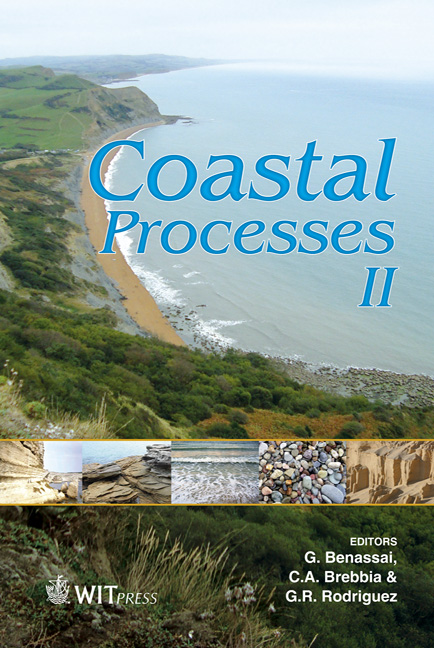Pacific Island Land Ocean Typhoon (PILOT) Experiment
Price
Free (open access)
Transaction
Volume
149
Pages
12
Page Range
151 - 162
Published
2011
Size
1,068 kb
Paper DOI
10.2495/CP110131
Copyright
WIT Press
Author(s)
S. J. Boc & K. K. Hathaway
Abstract
The PILOT program sponsored by the U.S. Army Corps of Engineers is designed to acquire data necessary to depict and better understand the physics of the wave–reef interaction. Field sites have been instrumented on the islands of Guam, Oahu and St. Croix. Guam and St. Croix were selected primarily because of their potential of being affected by tropical cyclones annually. In addition, they offer different reef characteristics with favourable physical and logistical settings to study waves, currents, and water levels over reefs. Data were collected from a nearby deep-water directional wave buoy, coastal water-level and meteorological stations, shallow water wave gauges on the reef flats, and a laser-based bathymetric survey. Two storm events were recorded during a St Croix deployment (10 August to 11 November 2008); the first, a swell event, and the second, a wind-sea event, were investigated for different wave transformations over the reef. The first event occurred 30 September–1 October 2008, with a large swell recorded at the offshore Waverider buoy and low wind speeds (~7 mph E-ENE) measured at the St Croix airport. Incident wave heights peaked at 2.7 m with peak periods of approximately 15 s, and an incident direction of 47 degrees (compass direction from true north). This event produced the largest waves observed over the reef in this deployment. Mean water level (setup/surge) was about 0.2 m above normal. The second event occurred with the passing of Hurricane Omar on 16 October 2008. Incident waves (wind seas) peaked at 4.4 m with peak periods of nearly 8 s and directions from about 36 degrees. Although the incident waves were substantially higher, 4.4 m vs. 2.7 m, the peak wave heights over the reef were lower, 0.55 m vs. 0.72 m. Wave energy on the reef was primarily in the infragravity band (20 s–120 s). Surge and setup were similar and only about 0.2 m. Keywords: reefs, waves, surge, wave setup, hurricane, wave-reef interaction.
Keywords
reefs, waves, surge, wave setup, hurricane, wave-reef interaction





